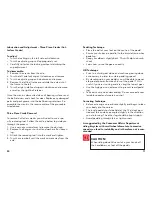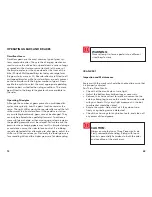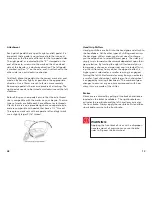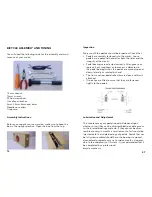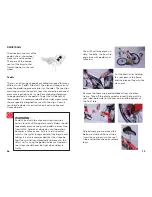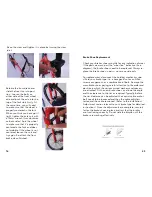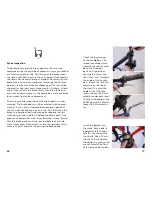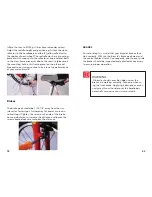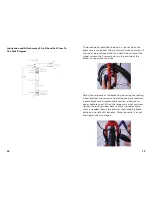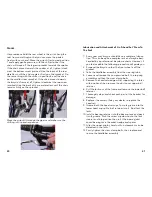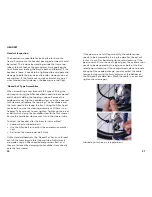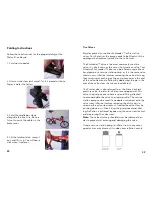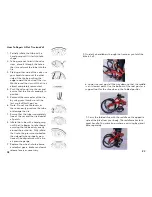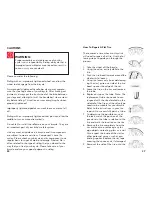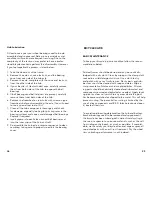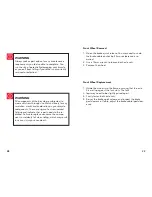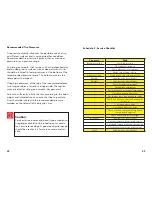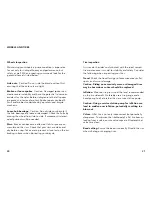
Hub Lubrication
At least once a year your wheel bearings need to be dis-
assembled and re-greased. Riding in very muddy or wet
conditions will mean more frequent servicing. Due to the
complexity of the task you may prefer to have a profes-
sional bicycle mechanic perform the disassembly. However,
if you feel capable the process is listed below:
1. Take the wheel out of the frame.
2. Remove the axle nut, cone lock nut, and the bearing
cone from one side of the hub axle.
3. Remove the axle, complete with the cone and lock nut,
from the other side of the hub.
4. If your bicycle is fi tted with dust caps, carefully remove
them from both sides of the hub to expose the ball
bearings.
5. If ball bearings and ball retainers are present, carefully
remove these from both sides of the hub.
6. Remove the freewheel on rear hubs with screw on type
freewheels before disassembling the axle. (You will need
to use a special tool to do this.)
7. Clean all the hub components thoroughly and check
for damage, especially looking for pits or grazes in the
bearing surfaces and cones, and damaged ball bearings.
Replace if required.
8. Insert grease into each clean or new ball bearing and
into the inner cups of the hub, and refi t.
9. Re-assemble the hub axle in reverse sequence to disas-
sembling, taking care to properly re-adjust the bearing
cones.
36
BICYCLE CARE
BASIC MAINTENANCE
To keep your bicycle in prime condition follow the recom-
mendations below:
Painted frames should be dusted and any loose dirt dis-
lodged with a dry cloth. Clean by wiping with a damp cloth
soaked in a mild detergent mixture. Use a cloth to dry
and polish with car or furniture wax. Plastic parts and rub-
ber tires should be cleaned with soap and water. Wipe a
rust preventative fl uid over chrome plated bikes. All mov-
ing parts should be habitually cleaned and lubricated, and
components secured and adjusted as needed. Apply touch
up paint or clear nail varnish to any areas where the paint
has become scratched or clipped to the metal. This will help
prevent rusting. The potential for rusting is limited by the
use of alloy components and B.E.D (black electronic depos-
it) treated steel rims.
To avoid rapid bearing deterioration the hub and bottom
bracket bearings need to be removed and re-greased if
the bicycle has been submerged in water. Avoid cycling in
the rain or exposure to corrosive materials, such as the salt
from riding on the beach, as much as possible. If unavoid-
able, wash and dry your bicycle often and wipe or spray all
unpainted parts with an anti-rust treatment. Dry the wheel
rims so braking performance is not hindered
.
25

